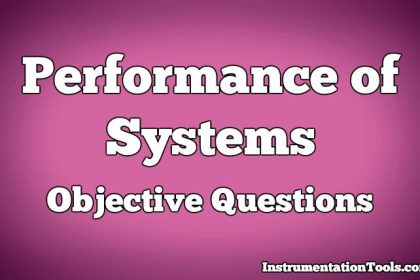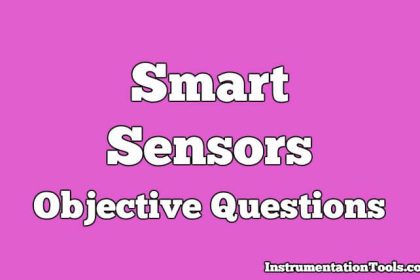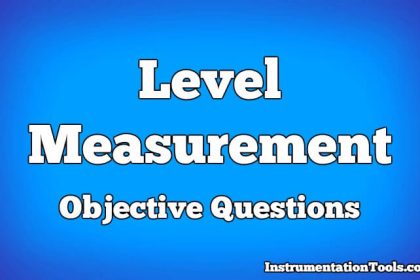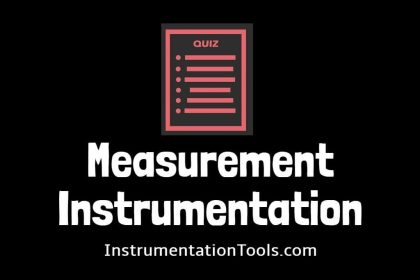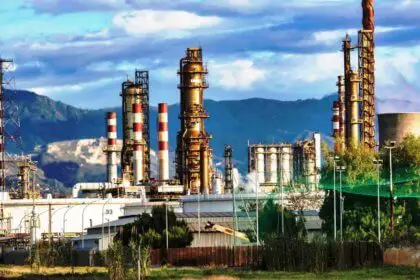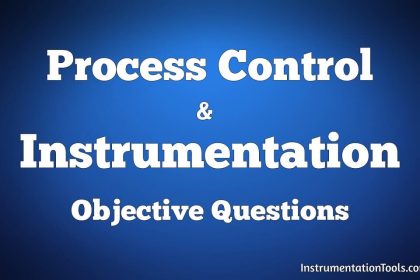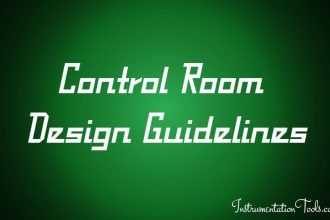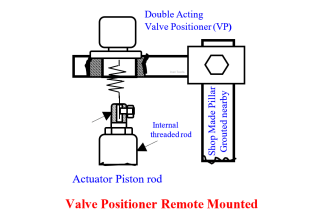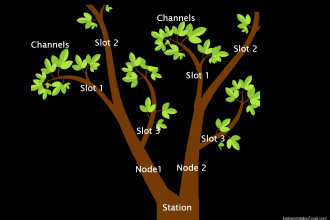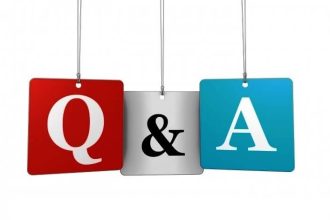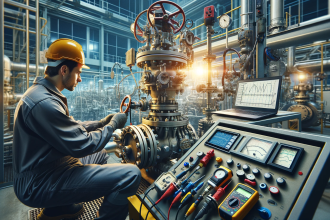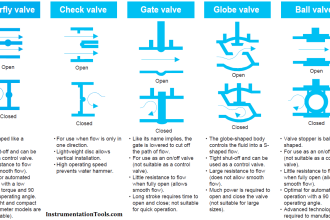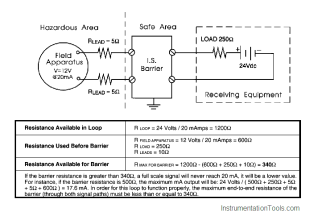Process Pressure Measurement Objective Questions
1. An ordinary commercial Bourdon gauge has a scale of 0 psi to 250 psi, and an accuracy of ±1 percent of span. If the gauge reads 175 psi, within what maximum and minimum values will the correct pressure fall?
a. 1.74 to 1.76 psi
b. 1.72.5 to 1.77.5 psi
c. 1.76.5 to 1.78.5 psi
d. 1.79 to 1.80 psi
Answer: b
2. A manometer, read carefully:
a. Always has zero error
b. Has an error caused by the liquid’s impurity unless corrected
c. May have an error caused by temperature and gravity effects on the various components and so on.
d. Has an error that varies only with altitude
Answer: c
3. Absolute pressure is :
a. Gauge pressure plus atmospheric pressure
b. Gauge pressure less atmospheric pressure
c. Gauge pressure plus atmospheric pressure divided by two
d. Always referenced to a point at the peak of Mt. Washington, N H
Answer: a
4. The pressure at the bottom of a pond where it is exactly 46 feet deep will be:
a. 100 psi
b. 46 psi
c. 20 psi
d. 20 psi absolute
Answer: c
5. The advantages of making absolute pressure measurements rather than gauge are:
a. Greater accuracy
b. Eliminates errors introduced by barometric variations
c. Is more indicative of true process conditions
d. Is more related to safety than gauge pressure
Answer: b
6. A bellows element is used as a receiver for a 3 to 15 psi pneumatic signal and by error, a 30-psi pressure is applied to it. The result will be:
a. A damaged bellows
b. An instrument in need of recalibration
c. No damage
d. A severe zero shift
Answer: c
7. A pressure instrument is calibrated from 100 to 600 psi. The span of this instrument is:
a. 600
b. 100
c. 500
d. 400
Answer: c
8. Instruments that measure pressure are generally classified as:
a. nonlinear
b. linear
c. free of hysteresis
d. None of the above
Answer: b
9. When reading a manometer, it is good practice to:
a. Read at the bottom of the meniscus
b. Read at the top of the meniscus
c. Read at the center of the meniscus
d. Carefully estimate the average of the meniscus
Answer: c
10. If a pressure range of 0 to 1 inch of water is to be measured and recorded, an instrument capable of doing this would be:
a. A bellows
b. A bell with a líquid seal
c. A Bourdon tube
d. A mercury manometer
Answer: b
11. When measuring a pressure that fluctuates severely:
a. A large-capacity tank should be installed
b. A pulsation dampeners should be employed
c. No problem is created
d. Read the peak and minimum and divide by two to obtain the true pressure
Answer: b
12. A measurement of absolute pressure is to be made using a mechanism employing two separate bellows. Measurements are applied to one bellows and the other:
a. Is sealed an atmospheric pressure of 14.7 psi
b. Is completely evacuated and sealed
c. Contains alcohol for temperature compensation
d. Has an active area twice that of the measuring bellows and is sealed at a pressure twice atmospheric
Answer: b
13. The danger of having a high-pressure line carrying a dangerous chemical rupture in the control room is:
a. Eliminated by using special duty piping
b. Ignored
c. Eliminated through the use of a transmission system
d. Minimized by placing the line within a protective barrier
Answer: c
14. The standard pneumatic transmission signal most generally used in the United States is:
a. 3 to 27 psi
b. 10 to 50 psi
c. 3 to 15 psi
d. 2 to 12 psi
Answer: c
15. A sealed pressure system:
a. Is similar in some ways to a liquid-filled thermometer
b. Seals the process material in the instrument
c. Must be used at a fixed temperature
d. Is always used with manual temperature compensation
Answer: a
16. A pneumatic relay:
a. Is a set of electrical contacts pneumatically actuated
b. Is a signal booster
c. Is a pneumatic amplifier
d. Contains a regulator actuated by a bellows
Answer: c
17. When the clearance between flap per and nozzle changes by 0.0006 inches the output of the transmitter will change by:
a. 3 psi
b. 15 psi
c. 12 psi
d. 6 psi
Answer: c
18. An instrument is to be calibrated to measure a range of 0 to 6,000 psi. For such a calibration:
a. oil or líquid should be used
b. Air must be used
c. An inert gas such as nitrogen is required
d. Any source of high pressure is acceptable
Answer: a
19. The kilopascal (kPa), an SI Unit of pressure:
a. Is always equivalent to psi x 6.895
b. Is gravity dependent
c. Is a force of 1.000 newtons (N) applied uniformly over an area of one square metre
d. Changes substantially from place to place
Answer: c
20. A pneumatic pressure transmitter is calibrated to a pressure range of 100 to 500 psi. The signal output is 10.2 psi. What is the measured pressure in psi?
a. 272 psi
b. 340 psi
c. 267 psi
d. 333 psi
Answer: b
21. A viscose line is located 100 feet from the control room where a record of line pressure must be made.The maximum pressure is approximately 85 psi. Select the instrumentation that can handle this job
a. A sealed system with 100 feet of capillary connected to a special element in a recording instruments
b. A sealed system connected to a nearby pneumatic transmitter sending a signal to a pneumatic receiving recorder
c. A direct connected spiral element recorder
d. A pneumatic transmitter directly connected to the line
Answer: b
22. A pressure recorder reads 38 psi and the barometer reads 30.12 inches of mercury. The absolute pressure is
a. 23.21 psi absolute
b. 68.12 psi absolute
c. 52.79 psi absolute
d. 38 psi absolute
Answer: c
23. The lowest ranges of pressure may be measured by
a. a water column
b. a bellows
c. a bell mete
d. a slack or limp-diaphragm
Answer: d
24. A slack diaphragm indicator is to be calibrated 0 to 1 inch of water. The standard would likely be:
a. a water column
b. a column of kerosene
c. a mercury-filled inclined manometer
d. a water-filled inclined manometer
Answer: d
